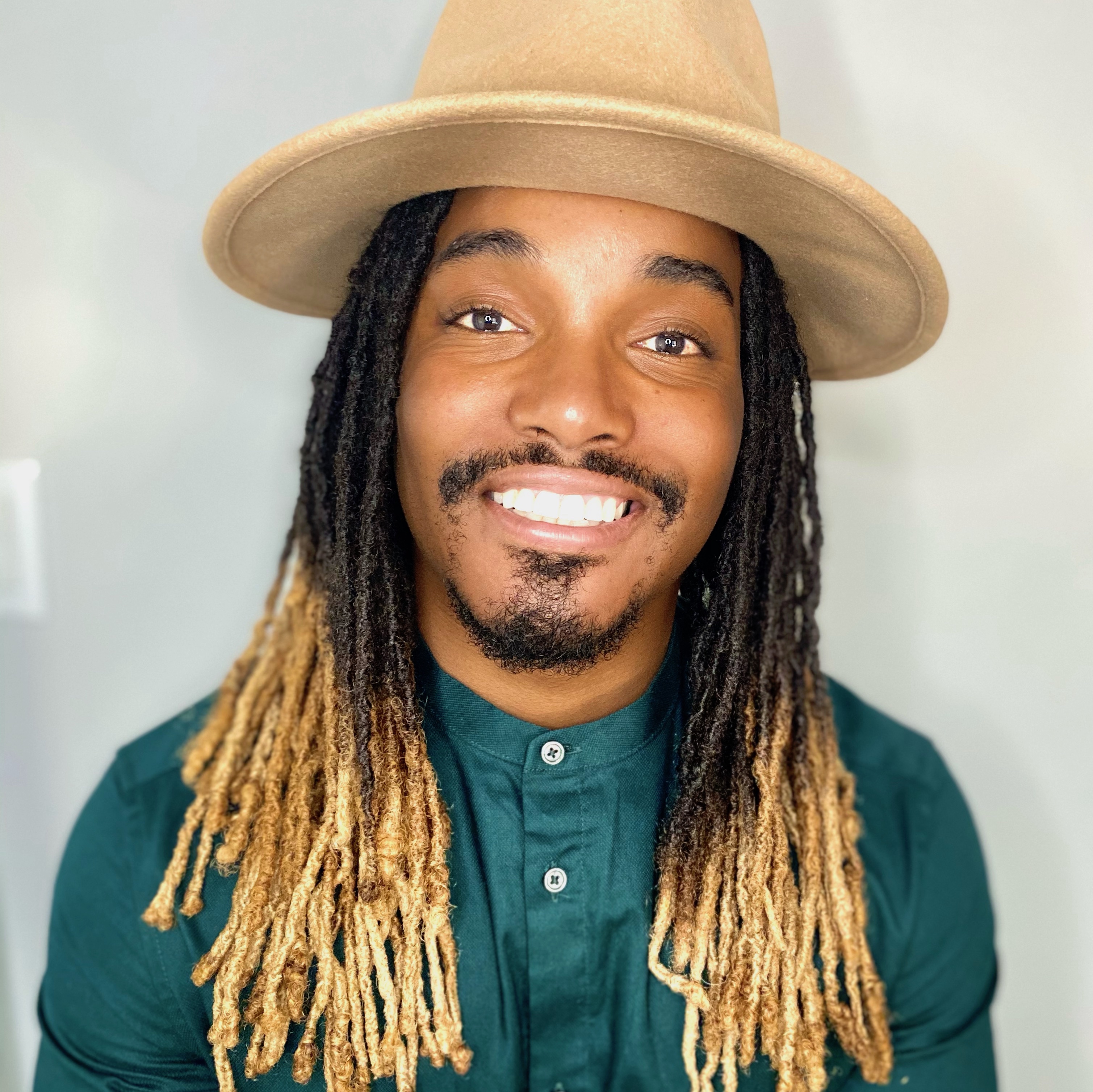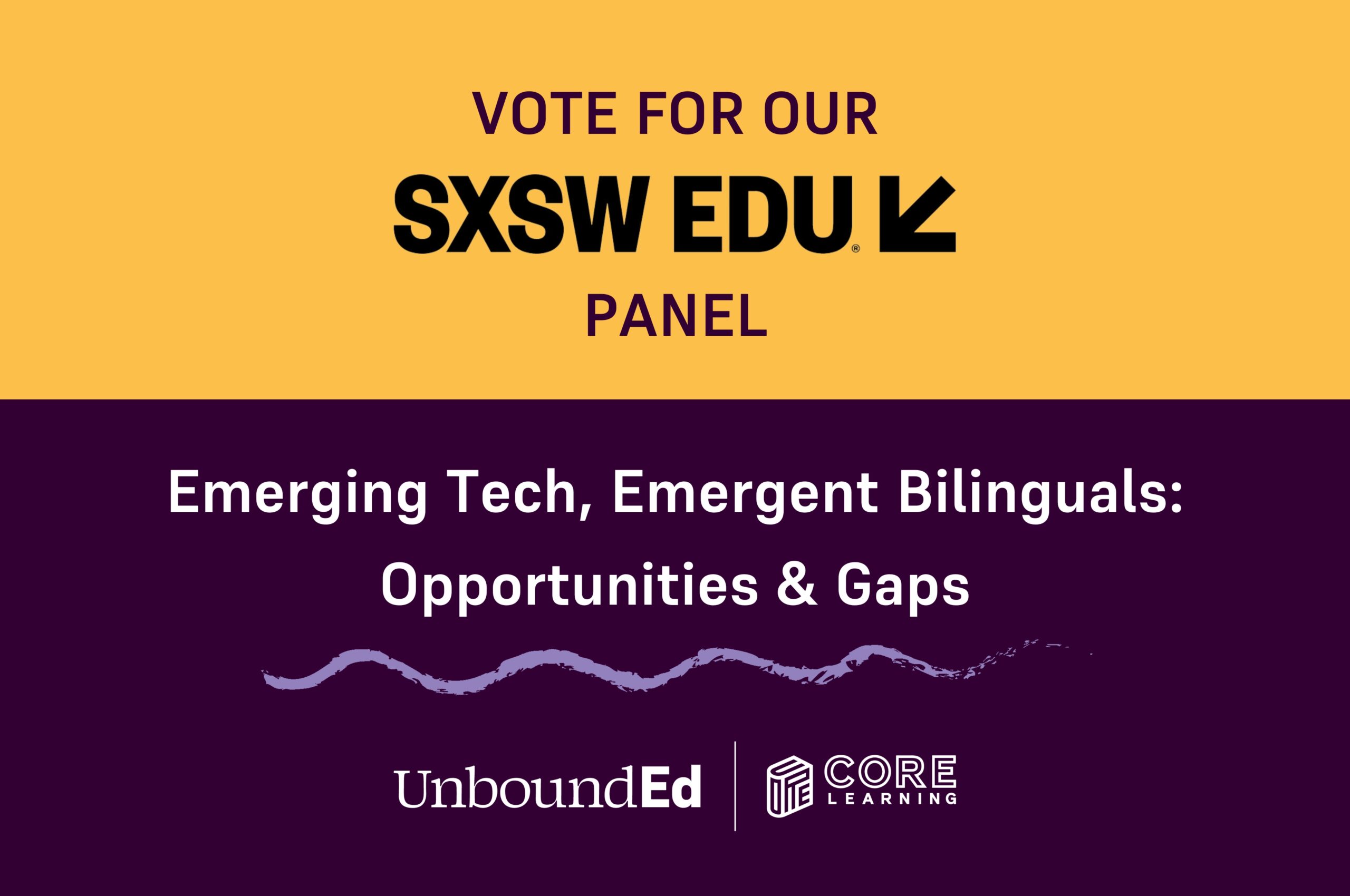 As a young child, Keyon Anderson knew that his brain didn’t work like other people’s. His peers were learning to read and he wasn’t. His teachers told him to try harder. His mother was told he would grow out of his reading difficulties. Keyon was diagnosed with a processing disorder and held back in the second grade, but he continued to struggle. When he reached high school he was reading at a second grade level. He wanted to be successful but didn’t have the skills. It wasn’t until 9th grade that he finally received effective intervention for dyslexia. A dedicated teacher worked with Keyon to teach him the fundamentals of reading and ways to learn that worked for him. By the end of his freshman year, Keyon was transformed from a failing student to one with a 4.0 GPA and a fierce desire to learn.
As a young child, Keyon Anderson knew that his brain didn’t work like other people’s. His peers were learning to read and he wasn’t. His teachers told him to try harder. His mother was told he would grow out of his reading difficulties. Keyon was diagnosed with a processing disorder and held back in the second grade, but he continued to struggle. When he reached high school he was reading at a second grade level. He wanted to be successful but didn’t have the skills. It wasn’t until 9th grade that he finally received effective intervention for dyslexia. A dedicated teacher worked with Keyon to teach him the fundamentals of reading and ways to learn that worked for him. By the end of his freshman year, Keyon was transformed from a failing student to one with a 4.0 GPA and a fierce desire to learn.
Interested in more great professional learning resources on supporting students with dyslexia? Check out this CORE webinar: Supporting Students with Dyslexia: Early Identification and Effective Intervention
Keyon graduated from high school and went on to earn a bachelor’s degree, a master’s degree, and a Doctor of Education in Educational Leadership at the University of Southern California Rossier School of Education. Today, Dr. Keyon Anderson is an author, motivational speaker, and advocate for underserved children and families in his Long Beach, California community.
Linda Diamond, former president of CORE and author of the Teaching Reading Sourcebook, sat down with Dr. Anderson to learn more about his journey. In this 20-minute podcast, Dr. Anderson provides an intimate look at what it’s like for a child struggling to read and offers advice for students and parents about how to advocate for the help they need.
Listen now:
Audio Player
Learn more about Dr. Anderson and his work on his website. Also be sure to visit CORE’s Dyslexia Virtual Library for more information and resources — including free, on-demand webinars, articles, and whitepapers — about word reading difficulties and best practices for early identification and evidence-based reading interventions.
Podcast Transcript
Linda Diamond:
Thanks for tuning in to this continuing conversation we’ve been having at CORE around reading as it connects to social justice. I’m Linda Diamond, president and founder of CORE and the author of the Teaching Reading Sourcebook.
Linda Diamond:
Dyslexia is one of the most common word-reading difficulties and has been estimated to affect as many as 15% to 20% of the population. Based on that, you might think that children are quickly identified and receive support right away. Unfortunately, that’s far from true. Too often these children are left on their own and don’t get the support they need, particularly children of color and students living in poverty. They may struggle for years and suffer long-term academic and social-emotional consequences.
Linda Diamond:
I’m joined today by Dr. Keyon Anderson, who was one of those children who was not identified in early childhood. In preschool, his mother noticed that something wasn’t quite working, but was told by professionals that he would grow out of it. That, often, is the answer that parents are given. It was not until he was around seven or eight that he was diagnosed with a processing disorder and then went on for three years without special assistance and was held back in a grade.
Linda Diamond:
In fact, Keyon was a freshman in high school reading at about second-grade level before he was given the help he needed. When he entered high school, he didn’t think he would graduate, but he did. Not only did Keyon graduate from high school, he earned a bachelor’s degree, a master’s degree, and ultimately a Doctor of Education in educational leadership at the University of Southern California Rossier School of Education.
Linda Diamond:
Today, Dr. Anderson works to help Long Beach’s underserved population, including first-generation, low-income, and ethnic minority students. He’s a prolific writer, as evidenced by a large number of books… I think it’s about 13, at least… that he’s authored. He’s a motivational speaker and an active member of the community. It’s really my privilege to introduce Keyon, and I will stop there and welcome him, and he’ll get deeper into his story. Hi, Dr. Anderson.
Keyon Anderson:
Hello, Linda, and hello, everybody listening.
Linda Diamond:
I know I’ve already said a lot about you, but why don’t you tell us about yourself in your own words, and when you first understood that you were having difficulty in school, and that struggling to learn to read and to learn was impacting you?
Keyon Anderson:
It’s interesting, because in preparation for this interview, I had to take a stroll down memory lane. And I remember being a very small kid and feeling like something was off and even expressing to my mom, “I’m not that smart. The other kids, we’re in class and they get this stuff, and I just don’t.” I would also stay up many late nights and I would watch the paid programming, and they had all of these tool kits that one could purchase that sort of help kids learn how to read. So, like Hooked on Phonics or sight word sorts of tools that I didn’t have at home, but I was just always truly frustrated. Like, “This kid is, like, two years old, and apparently they can read, and they’re able to operate in ways that I’m not.”
Keyon Anderson:
So, very early on, I had this residing hopelessness in terms of my ability to achieve in an academic setting. I think something that made me even more frustrated was some of the messaging that I received from some of my teachers in regards to me not doing better out of this sort of notion that I was actively deciding that I didn’t want to learn. It was sort of like, “Well, if you just tried harder, you would be better at this.” And it was like, “I’m really trying, and I really want to be successful, but I don’t know what the missing piece is.” And that was something that I struggled with for years, being able to vocalize, “This is sort of what I’m experiencing.” I had a lot of people around who told me what it looked like as a result of how I was performing, but I didn’t have the word. So, I knew early on there was something different. I didn’t quite understand it.
Keyon Anderson:
And for me, the first time that I really had someone who sat down and talked to me about it, I was in the ninth grade, in high school. My special education teacher, Miss O., she actually sat me down and she’s like, “Look, some of the stuff that worked for other kids just isn’t going to work for you, and that’s fine, but I’m going to show you how to learn in ways that work for your brain.” And it was like night and day within a nine-month period in terms of how I was able to access my education. I remember barely making it out of middle school. I think I had a couple Ds, and I probably was only pushed forward because I had an IEP, and then I made it to ninth grade and I had someone who slowed down and helped me make sense of it. So, that was the first time that I really understood, “Okay. So, my brain is operating in some other way, and I can relinquish the obligation that I have in my mind about doing things like other students. I need to do it in the way that works for me, and that is okay.”
Linda Diamond:
Wow. That’s a long time to wait to find that out. And thank goodness for Miss. O. And I think that’s the reality for many kids, that there’s someone, finally, who gets it and then is able to really assist those kids. And can you describe a little bit about what she did? What was done that really did help you to start to learn?
Keyon Anderson:
So, when I was working with Miss O., she utilized a program called the Lindamood-Bell program. I think I’m pronouncing that correctly. And what that meant was she took me back to the basics. So, I was in the ninth grade, going over, “These are the sounds that are associated with the letters. This is what it looks like when you put these sounds together to make words. This is how you break up the word. This is 1000 sight words that absolutely don’t make any sense, but this is English, and it’s complicated. So, you also need to learn these words so that it makes sense.” She really helped me begin to differentiate in terms of breaking down and understanding words. And then she also utilized text that was closely related to things that I could relate to. So, while I was in high school, we were reading the Bloopers series, and I read The Child Called It, and I read other books that sort of related to things that I could connect to based on what I was seeing in my world.
Linda Diamond:
Oh, that makes sense. That’s interesting that it was the Lindamood-Bell system. That was really literally one of the very first early systems that taught phonology and systematic phonics and the linguistics. In fact, I was a principal in an elementary school, and all of our kindergarten teachers used it to teach kindergarten to all the kids. So, that prevented kids from developing problems or going too long. Given how long it took for you, how did you keep yourself motivated?
Keyon Anderson:
Before the ninth grade, I wasn’t. So, before high school, I went to school as a mandate. I understood that going to school was sort of a responsibility that I had, and if I was not attending school, then that meant that my mom would get this ticket and we’d have to go to court. And that was just way too much of a battle to fight. So, before high school, I wasn’t motivated in terms of academics. I had other interests. I danced. I was involved in a few activities in relation to my mom’s business, but school was sort of like my last resort. And then in ninth grade, after meeting Miss O. and learning the basics, it literally transformed what I thought was possible. And then at that point, it was like, “Okay. I’m doing so much better.” I went from almost flunking out of middle school to having my first 4.0. And I was like, “Wait. I’ve got all As,” and the bulk of my classes were regular main classes or general ed classes, with the exception of my reading development class.
Keyon Anderson:
So, I’m competing with my peers and I’m actually doing this. For me, that was exciting, because I’d always wanted to be successful. I just didn’t have the skills to be successful. So, then, after getting that, it was like I was on fire. My freshman year, I was in general ed, with the exception of my reading class. My sophomore year, I began to take AP and honor classes. By the end of my sophomore year, I was taking community college classes. So, it really sort of set the stage that other things that I wanted to be attainable were now attainable. I remember looking back and really being excited, in middle school, about taking wood class or taking home economics. And I didn’t get to take those classes because I had my reading development class. So, in the ninth grade, it was like, “I do really well. I now can take electives, which means that I can get some exposure to other things that I’m going to enjoy.”
Linda Diamond:
Wow. So, things really transformed for you in high school.
Keyon Anderson:
Yeah.
Linda Diamond:
How did that look? How did your mother look at that? Given that she, early on, was aware that something was different, but now she saw you kind of on fire in high school. What was the impact on her?
Keyon Anderson:
I think for my mom, I think she felt vindicated. She was like, “I told these people, and I’ve been telling them for a long time, and no one is listening to me.” So, I think that for my mom, she knew that I could do it. She just didn’t know what it was going to take in order for me to turn around and be able to do it. So, in her mind, she’s like, “Something’s off. He’s missing something here.” And she didn’t have the skills herself to be able to help me navigate that process, but she was very active in advocating for me all the way throughout, and when I hit my freshman year and I was doing well, she was like, “Finally, someone is listening to what I’ve been saying all of these years.”
Linda Diamond:
Wow. Yeah. That’s so amazing. And then after you’ve completed all these degrees, you became an author. And what led you to being an author and wanting to be a writer?
Keyon Anderson:
So, interestingly enough, while still in Miss O.’s class, because I was doing well, I actually began this process of saving all of my work, because I was impressed. Like, “Oh my God. I wrote this thing. One day, this would be a really cool story.” And then, when I got into my second year of my doctorate program, I was like, “I’m going to finish this book I’ve been drafting for 10 years.” So, then I finally finished my first novel, which is more for teenagers, called Moments Either Define or Contribute to Who You Are, and I utilized a lot of the beginning framing that I had developed while I was in high school. So, I’d saved little stories and essays and things that I wrote for classes, and I embedded those things into my first novel. And then from there, I was really looking to create stories for people who look like me and stories that I would have appreciated during my journey.
Keyon Anderson:
So, one of the books that I recently published is called Prosper, and it’s actually going through the process of this kid who wants to learn how to read and is having struggles and then has a teacher who’s patient enough to walk him through the process and explain, “This is what’s happening in your brain.” And in my mind, I figure if we could start that conversation earlier, then they can know that they’re not alone, because for years I was isolated in my mind. The things that I’m trying to manifest and trying to produce for the world, they just weren’t coming out, and I was holding myself to standards that were unrealistic for the way that my brain operates. In school, they were like, “You want to use Cornell Notes,” where you’re writing questions on one side and the notes in the center. And I’m like, “This is way too much processing. I’m actually confused, and it’s not serving for me,” and to be affirmed and sort of… That really made a difference, and I really wanted to be able to write and produce things for kids so that they could have that moment that I had when I was reading the Bloopers series.
Linda Diamond:
I’m curious. Do you have a favorite book among the books that you wrote?
Keyon Anderson:
So, I don’t know if I have a favorite book. I think they all represent different things. I think that the book that made me cry was probably Prosper. Being able to see a story like mine on paper and being able to encourage other educators, like, “You could slow down and you can see this.” In my work and being in school settings, I’ve been in a space with a kid for 20 minutes. I’m like, “So, this is probably what’s going on. He’s not a bad kid.” And it almost makes me wonder, maybe I can identify more and quickly because I also relate, but then I’m also wondering if people are not paying attention, because it’s like, the signs are there. How many times are they going to write an S backwards before you realize that that’s not a three, and that there’s something off? So, I think for me, that was a big hurdle, especially because I’m a professor now and I’m a writer. And I think that that book really speaks to that journey, and for me, it speaks to the responsibility that we have as educators in order to make sure that we’re paying attention.
Linda Diamond:
Yeah. And that leads into my last question quite nicely, and that is, what advice would you give other students, other children, but also educators?
Keyon Anderson:
So, the advice that I would give other children… And the book that I wrote centered around this, They Say We Don’t, there’s sort of this framing and this narrative that we build about what our limitations are. So, I wrote up book sort of centered around, “You can jump out of a plane. You can scuba dive. You can travel the world, and you can accomplish great things,” sort of building that out, and I think reinforcing that as possible and that they have to find their groove and what works for them. Even today, like in my doctoral program, my professors was like, “You need to take notes.” If I’m taking notes, I’m not listening, because as soon as this pencil hits the paper, you no longer have my attention. So, I know that it makes you feel uncomfortable that I am not taking notes in the traditional format, but that method just doesn’t work for me. So, I think teaching young kids that it’s okay to be different in ways that contribute to your success. My message for teachers is not to try to fit a square peg into a round hole. Everything isn’t going to be the same, and I think that we have to look at practices that allow for differences and that allow for students to show up in ways that make sense for them, and I also think that we have to be patient in that process.
Keyon Anderson:
It took me till I was 14 before it finally clicked. That was after repeating the second grade. That was after having some form of interventions. I don’t know. I would say that I didn’t think they were intervention. Those packages with tasks to complete on your own about filling in the word with the sentence, but I lacked the skills to do that. So, those things didn’t make sense. But being patient while on this process, and then I think with parents, recognizing the power that you have to advocate.
Keyon Anderson:
I’ve spent a significant amount of time working one-on-one with parents and teaching them how to advocate for their child even when they feel disempowered. So, getting additional services and doing these additional things, it’s inconvenient. You may have to take off of work. You may have to take meetings that are inconvenient, but if we can get this done early, it can set the stage for unlimited possibilities. My mom not going into work to go to an IEP or having a conference with a teacher, those things made it possible for me to get here. And unfortunately, because I was one of maybe 25 to 35 students in a class, the teacher may not have had the capacity to slow down enough. So, it really mattered that my parent, my mother, was advocating for me along this process. And she was also teaching me how to advocate for myself. So, you have to speak up. You have to say what you need in working through that process.
Linda Diamond:
Wow. Thank you. Thank you so much. This is so inspirational. It’s certainly what the work that we do at CORE, where we work with teachers to actually help them understand first how reading works and what to notice early on and what to do about it. And your messages are so important. And I’m certain that your books are contributing to those messages. And thank you for working not only with kids and students, but also talking to parents who really do have to be an advocate for their children, even if they’re in the face of a denial from the system sometimes, which is difficult.
Linda Diamond:
So, I’d like to thank you again and wish you well as you continue this journey. I actually ordered Prosper. So, I’m excited. It hasn’t come yet. So, I’m really excited to get it and read it. And thank you so much.
Keyon Anderson:
Thank you, Linda.
About CORE
From Cat in the Hat to reading a prescription label, from fractions to following a recipe, from writing an essay to writing a resume, what students learn in school impacts what they can achieve in life. At CORE, we believe that all students can become strong readers and master math. All it takes is teachers who have a deep knowledge of evidence-based instructional practices and ongoing support to implement them in their classrooms.
CORE partners with schools and districts to help educators implement high-quality math and English language arts curriculum, rigorous instruction, and effective assessment practices. By supporting teachers in their professional growth, we are ensuring that generations of young people learn to read, write, and do math so that all students, especially those who have been marginalized and traditionally underserved, can reach their full potential. Join us in our mission to help every teacher provide an outstanding education for each and every student. Learn more about CORE and our workshops, courses, and consulting services at corelearn.com.


 As a young child, Keyon Anderson knew that his brain didn’t work like other people’s. His peers were learning to read and he wasn’t. His teachers told him to try harder. His mother was told he would grow out of his reading difficulties. Keyon was diagnosed with a processing disorder and held back in the second grade, but he continued to struggle. When he reached high school he was reading at a second grade level. He wanted to be successful but didn’t have the skills. It wasn’t until 9th grade that he finally received effective intervention for dyslexia. A dedicated teacher worked with Keyon to teach him the fundamentals of reading and ways to learn that worked for him. By the end of his freshman year, Keyon was transformed from a failing student to one with a 4.0 GPA and a fierce desire to learn.
As a young child, Keyon Anderson knew that his brain didn’t work like other people’s. His peers were learning to read and he wasn’t. His teachers told him to try harder. His mother was told he would grow out of his reading difficulties. Keyon was diagnosed with a processing disorder and held back in the second grade, but he continued to struggle. When he reached high school he was reading at a second grade level. He wanted to be successful but didn’t have the skills. It wasn’t until 9th grade that he finally received effective intervention for dyslexia. A dedicated teacher worked with Keyon to teach him the fundamentals of reading and ways to learn that worked for him. By the end of his freshman year, Keyon was transformed from a failing student to one with a 4.0 GPA and a fierce desire to learn.



